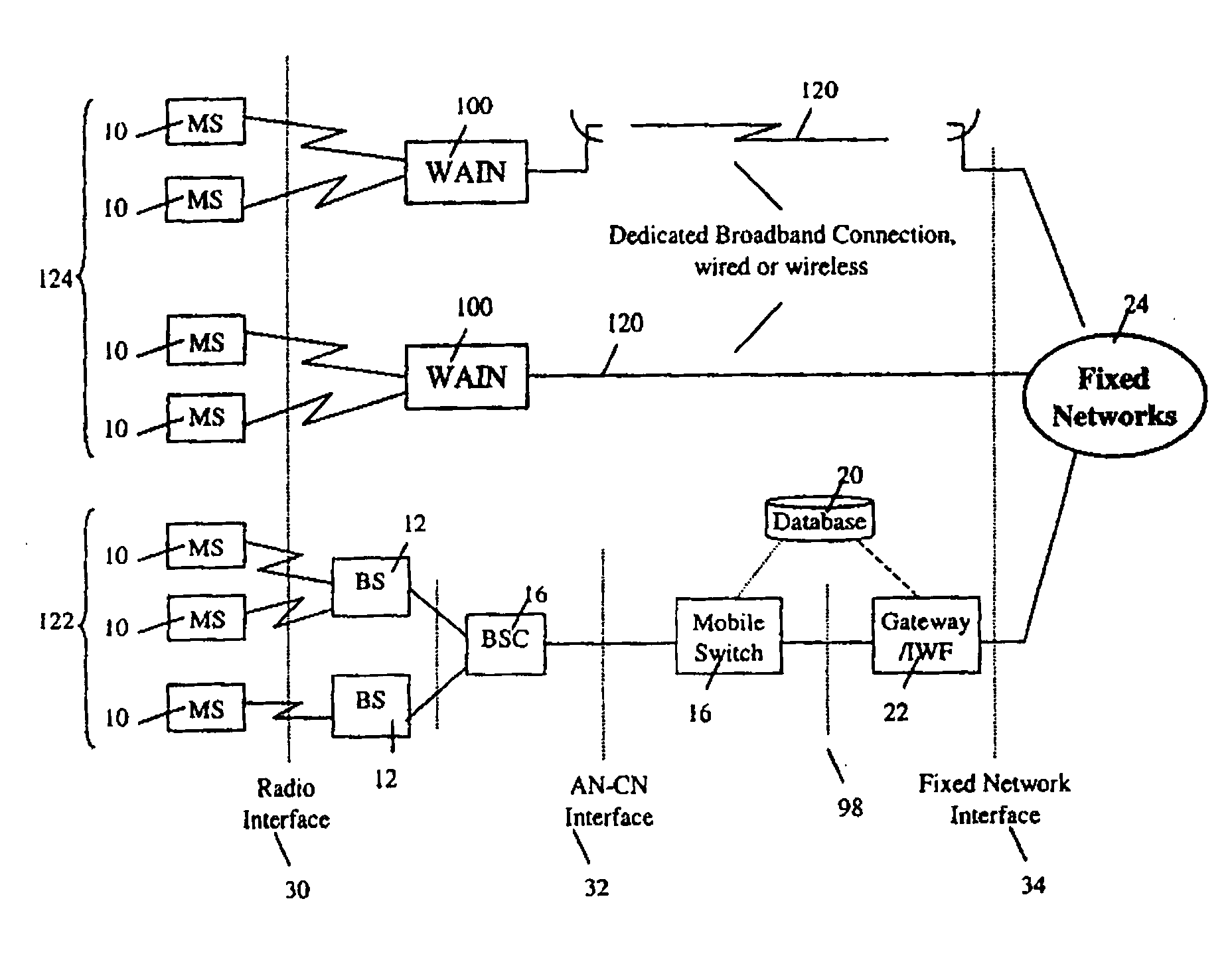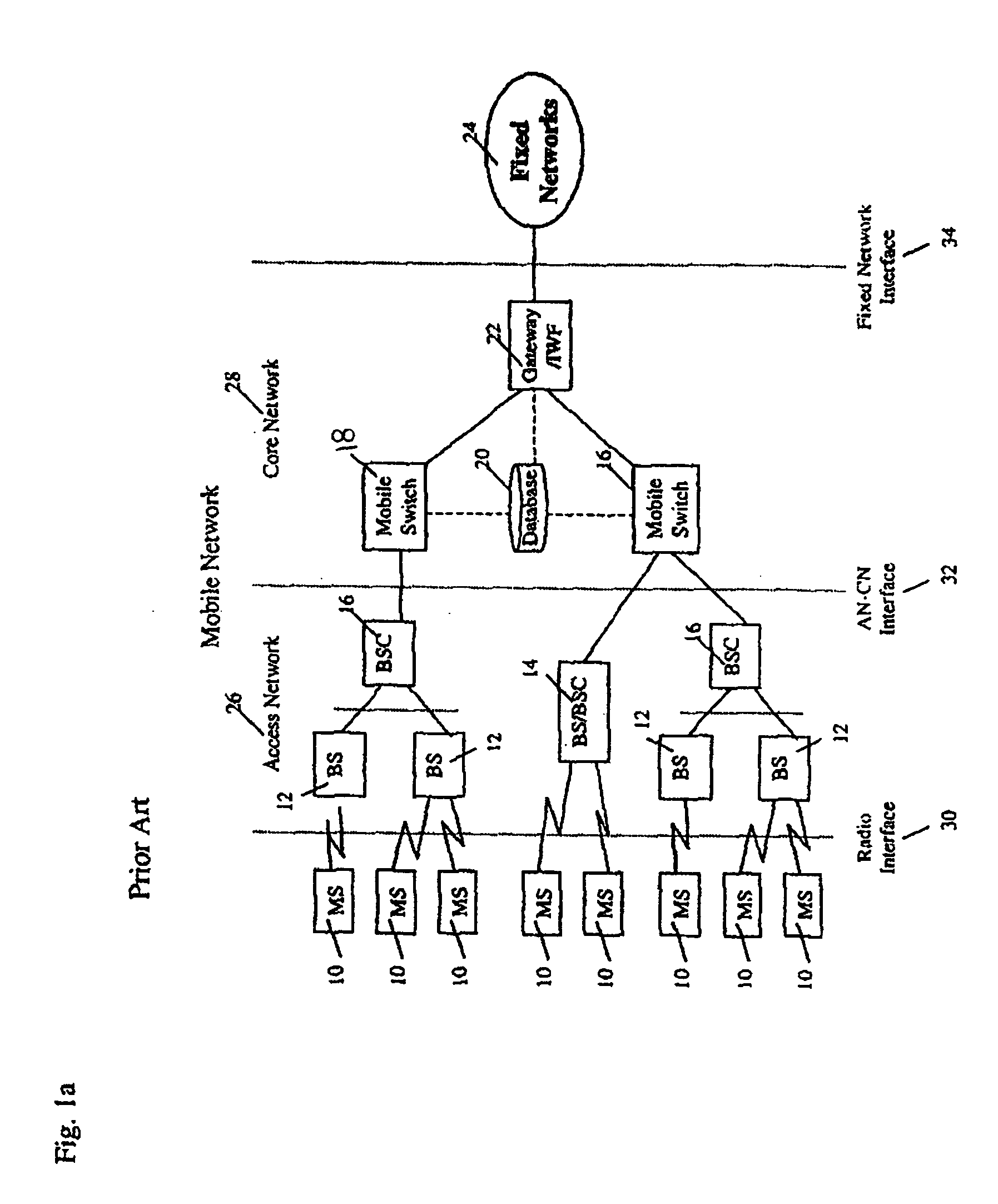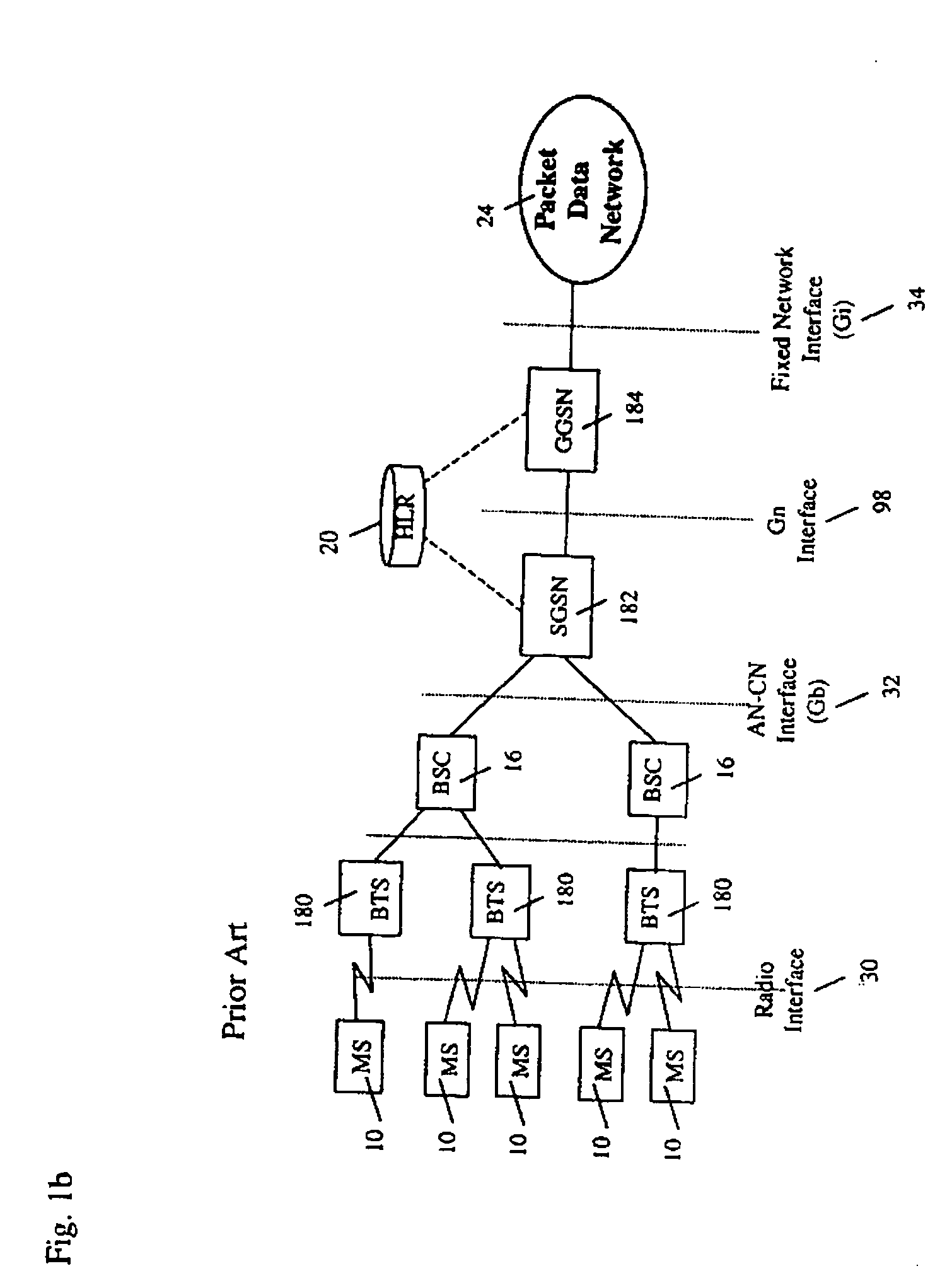Apparatus and system to provide wireless data services through a wireless access integrated node
a wireless access and integrated node technology, applied in the field of mobile data transmission systems and wireless access to packet data networks, to achieve the effects of reducing interference, improving the efficiency of radio resource usage, and increasing the overall wireless system capacity
- Summary
- Abstract
- Description
- Claims
- Application Information
AI Technical Summary
Benefits of technology
Problems solved by technology
Method used
Image
Examples
Embodiment Construction
[0049] With reference to FIG. 1, in a 3G mobile system, mobile stations (MS) 10 are either connected to a base station (BS) 12, which is in turn connected to a base station controller (BSC) 16, or a combination base station / base station controller (BS / BSC) 14. The BSC 16 or BS / BSC 14 is connected to a mobile switch (generally known as the Mobile Switching Center (MSC)) 18 for either circuit- or packet-switching. The Mobile Switch 18 is also responsible for the mobility management of MSs 10 attached to the network. A database 20 (often referred to as a Home Location Register (HLR)) linked to the Mobile Switch 18 stores the MSs' 10 subscription and operational data. Several Mobile Switches 18 may be connected to a gateway (generally known as the gateway mobile switch center (GMSC)) or interworking function (IWF) 22 which interworks with fixed networks 24 (such as a PDN).
[0050] The BSs 12 and BSCs 16 or BS / BSCs 14 form the Access Network 26, where user traffic enters the mobile commun...
PUM
 Login to View More
Login to View More Abstract
Description
Claims
Application Information
 Login to View More
Login to View More - R&D
- Intellectual Property
- Life Sciences
- Materials
- Tech Scout
- Unparalleled Data Quality
- Higher Quality Content
- 60% Fewer Hallucinations
Browse by: Latest US Patents, China's latest patents, Technical Efficacy Thesaurus, Application Domain, Technology Topic, Popular Technical Reports.
© 2025 PatSnap. All rights reserved.Legal|Privacy policy|Modern Slavery Act Transparency Statement|Sitemap|About US| Contact US: help@patsnap.com



